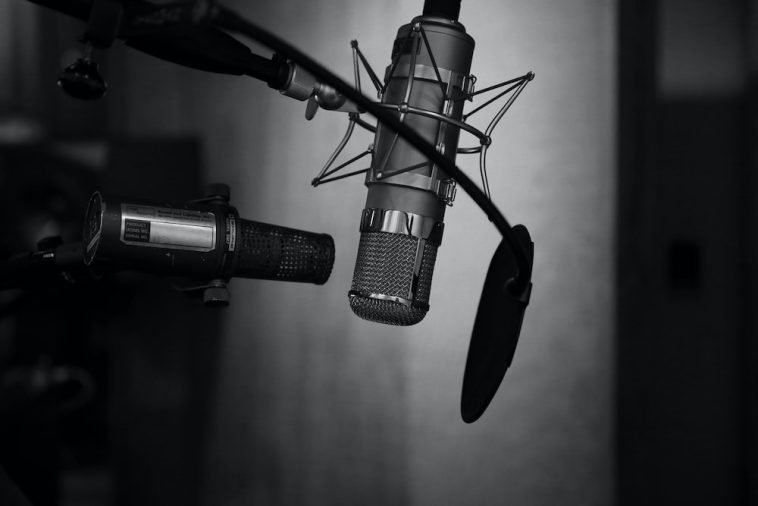Introduction.
Starting a podcast is thrilling—you’ve got ideas, passion, and maybe even some eager listeners lined up.
But before diving into the recording and editing, there’s one essential step to make your show successful: formatting.
A well-structured format can shape the flow of your podcast, keep listeners engaged, and make every episode feel polished.
Figuring out the right format doesn’t have to be intimidating, either. With the right guidance, it’s simple to create a structure that highlights your content, matches your style, and draws in the audience you’re hoping to reach.
In this guide, I’ll break down the different podcast formats, why certain styles work better for different types of shows, and how to decide on a format that suits you best.
Let’s walk through the essential components of a good podcast structure, from intros to outros and everything in between, so you can hit “record” with confidence.
Types of Podcast Formats
Choosing the right format comes down to what kind of experience you want to create and who you want to attract. Here are the most popular formats:
1. Interview Podcast.
The interview format is one of the most popular styles because it opens up the show to multiple voices and insights. It’s perfect for people who want to bring in experts, thought leaders, or unique guests. Each episode typically features a conversation with a new guest, guided by your questions or topics.
- Pros: Varied perspectives keep things interesting; attracts listeners with different interests; networking opportunities.
- Cons: Finding guests can be time-consuming; more prep is needed for quality questions; can lack consistency if guests’ styles vary.
2. Solo/Monologue Podcast.
In a solo podcast, you’re the star. It’s just you, a microphone, and your insights. This format can be highly personal and makes for a consistent show style since it’s just you sharing thoughts, stories, or expertise.
- Pros: Great for building a personal brand; minimal setup; full control over content.
- Cons: Harder to keep things fresh alone; audience engagement may vary depending on the topic.
3. Panel Show.
A panel show has multiple hosts, often with one main host guiding the conversation. This format works well for roundtable discussions or group debates on various topics. It’s fun, dynamic, and brings in multiple perspectives.
- Pros: Lively discussions; multiple personalities keep listeners engaged.
- Cons: Coordination can be tricky; requires good chemistry among hosts.
4. Narrative/Storytelling Podcast.
A storytelling podcast is usually scripted or semi-scripted and covers a series of events or a narrative across episodes. This is ideal for genres like true crime, history, or fictional stories.
- Pros: Ideal for creating a deep connection with the story; appeals to binge listeners.
- Cons: High production and planning time; requires strong writing and editing skills.
5. Hybrid Podcast.
A hybrid format combines elements from other formats. For instance, you might start with a monologue and then move into an interview, or perhaps you intersperse storytelling with solo commentary.
- Pros: Flexibility; can adapt based on audience response.
- Cons: Can be inconsistent if not well planned.
Structuring Your Podcast Episode
Once you’ve picked a format, you’ll want to develop a clear structure for each episode. Here’s a basic outline that can help keep your show organized and professional:
1. Opening/Intro
- Keep it short (10-30 seconds).
- Greet your listeners, introduce the episode’s theme, and mention any key guests.
- Many hosts use intro music or a jingle to set the tone.
2. Hook or Teaser
- Introduce a question or highlight a surprising fact to pique interest right away. This is a great way to capture attention right from the start.
3. Segment One: Main Content
- Dive into your primary content or interview. For solo podcasts, this might mean explaining a concept or telling a story. For interviews, it’s the core conversation.
4. Mid-Episode Break (Optional)
- This is a good spot for a quick ad or a brief break, especially for longer episodes. Use this time to promote a sponsor, your products, or another episode.
5. Segment Two: Additional Content
- Many podcasters use a secondary segment to deepen the main topic or explore related themes. You might add in listener questions, more stories, or other perspectives.
6. Wrap-Up and Call to Action
- Recap the episode, mention key takeaways, and thank listeners and guests.
- If you have a website, blog, or social media, encourage listeners to check those out for more content.
7. Outro
- End with your closing music or jingle. Consistent music cues help with brand recognition and make the episode feel polished.
Best Practices to Keep Listeners Hooked
- Be Consistent: Consistency is key in podcasting. A regular schedule and episode length build loyalty and help listeners know what to expect. Most popular podcasts run weekly or bi-weekly, with episodes averaging 30-60 minutes.
- Engage with Listeners: Encourage feedback and questions, shout out to listeners, and build an online community. A connected audience is more likely to stick around.
- Edit for Quality: Good editing makes a huge difference. Removing dead air, filler words, and repetitive sections helps maintain a good pace and keeps episodes engaging.
- Prioritize Good Audio: Clear, high-quality audio is a must. Investing in a decent microphone can make a huge difference, as even the best content can be hard to listen to if audio quality is low.
FAQ
1. What’s the ideal length for a podcast episode?
There’s no one-size-fits-all answer here. Aim for 30-60 minutes if you’re unsure. However, the right length really depends on your content and audience preference.
2. Do I need a script?
Not necessarily. Some people prefer bullet points, while others use full scripts. If you’re storytelling or working on a highly produced show, a script can be helpful, but interview and conversational formats are often better with a natural flow.
3. Can I change my format later?
Absolutely! Many podcasters adjust their format as they get feedback and learn what resonates with listeners. Just be sure to announce any big changes so listeners aren’t confused.
4. How often should I publish episodes?
Consistency is more important than frequency. Whether it’s weekly, bi-weekly, or monthly, choose a schedule you can realistically maintain long-term.
5. Should I add music and sound effects?
Yes, but use them sparingly. Music can add polish to your podcast, and sound effects are great for storytelling or emphasizing points, but too much can be distracting.
Wrapping It Up
Crafting the right podcast format takes a bit of experimentation. Whether you’re interviewing guests, telling stories, or simply sharing your own insights, a thoughtful format will make your podcast flow smoothly, keep listeners engaged, and make episodes more memorable.
Remember, it’s okay to experiment and evolve over time—part of building a podcast is finding what works best for you and your audience.
So, what format are you thinking of for your podcast, and why?





GIPHY App Key not set. Please check settings